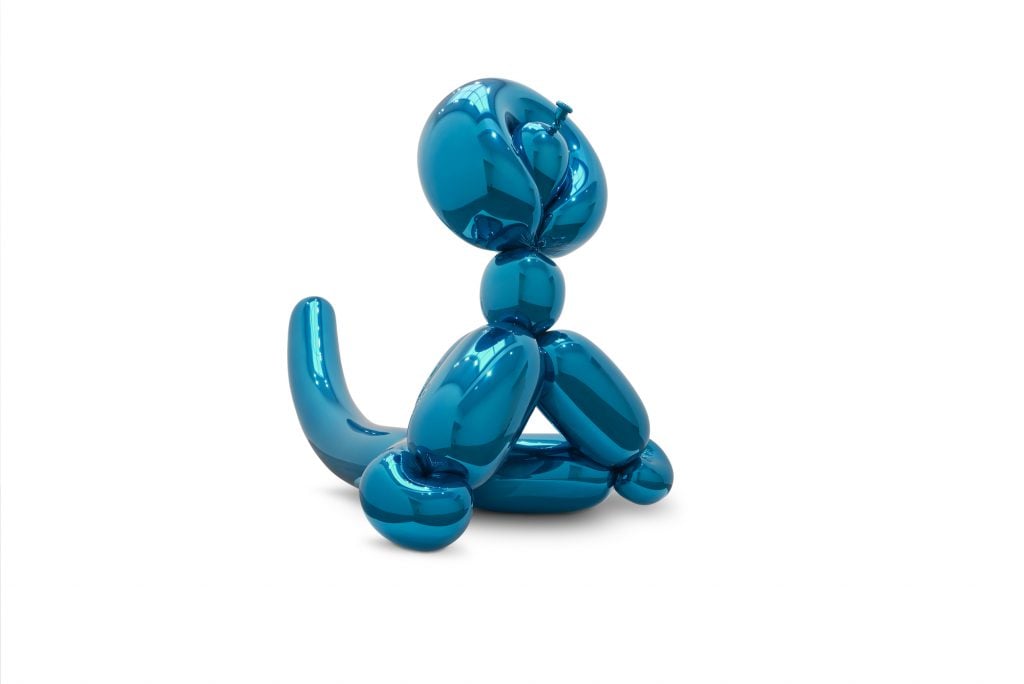Market
Damien Hirst Is Selling a $8.4 Million Jeff Koons at Christie’s During Frieze London
The orange version of the piece went for $25.9 million in 2014.

The orange version of the piece went for $25.9 million in 2014.

Eileen Kinsella

At the upcoming Frieze Week auctions in London, Christie’s will offer a major Jeff Koons sculpture, Balloon Monkey (Blue), 2006–13, with an estimate of about $8.4 million to $13 million (£6.5 million to £10 million).
The sculpture, which has been guaranteed by Christie’s, has an intriguing consignor, the Financial Times reports: artist Damien Hirst, who showed it at his Newport Street Gallery in London in 2016. (Christie’s declined to confirm that Hirst is the seller, citing its client-confidentiality rules.) The work was also shown in a Koons show at the Palazzo Strozzi in Florence in 2021.
Christie’s contemporary art specialist Katherine Arnold called the work, in a statement to press, a “triumph in formal splendor and technical achievement refined over seven years by the artist.”
There are five Balloon Monkey sculptures, and in November 2014, Christie’s sold an orange version (also from 2006–13) at a New York evening auction for $25.9 million, right in the middle of its presale estimate of $20 million to $30 million.
Hirst’s company, Science Ltd, did not immediately respond to a request for comment about the consignment.
News of the sale comes after a wave of bad publicity for Hirst.
In May, the Guardian reported that at least 1,000 paintings on paper that Hirst said were made in 2016 were actually created several years later. These multi-colored dot works were part of a project called “The Currency” aimed at creating art that could function like money and were said to have been hand-painted.
When they were offered for sale in 2021, buyers had the option of acquiring “a permanent digital record of the paintings” as an NFT. The artist termed it “the most exciting project I have ever worked on by far,” and it reportedly raked in $18 million. “However, five sources familiar with the creation of the works, including some of the painters who put the dots to paper, told the Guardian many of them were mass-produced in 2018 and 2019,” according to the report.
In March, the Guardian reported that Hirst backdated at least three of his signature formaldehyde tanks featuring preserved animals, claiming that they are much older than they actually are. According to the report, three Hirst sculptures—variously containing a dove, a shark, and two calves—that had been exhibited at galleries in New York, Hong Kong, Munich, and London as pieces from the 1990s were actually produced just a few years ago.
Hirst’s attorneys have said that he not been consistent in his dating methods. Though he uses the date of a work’s conception as the “usual approach” for his formaldehyde pieces, he has also sometimes gone with the date a piece has been physically produced. “Artists are perfectly entitled to be (and often are) inconsistent in their dating of works,” the lawyers said in a statement.
Everyone at least firmly agrees that the dating of the Koons sculpture is correct.